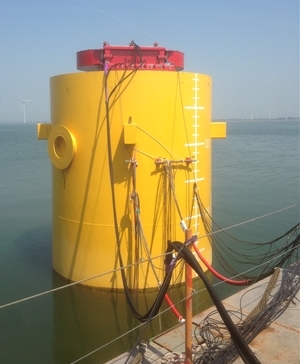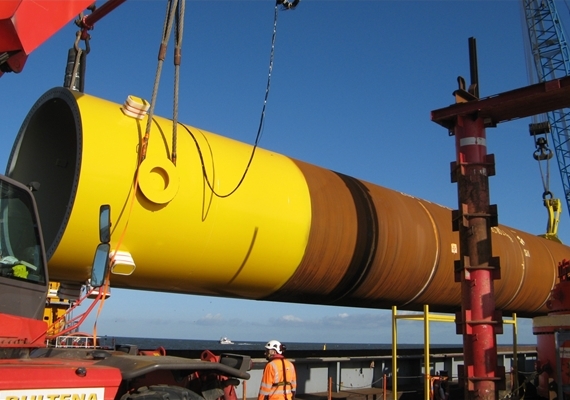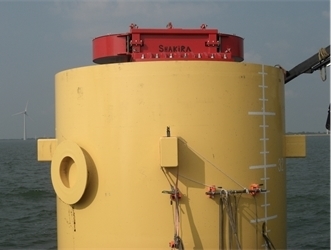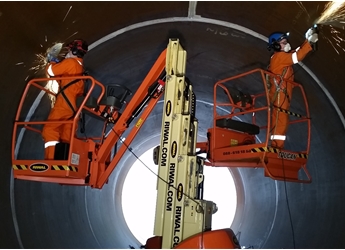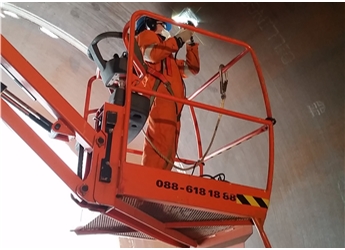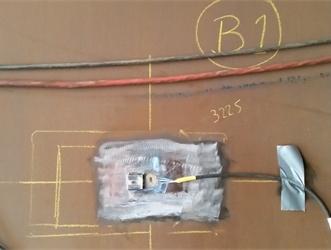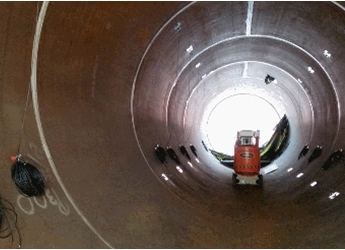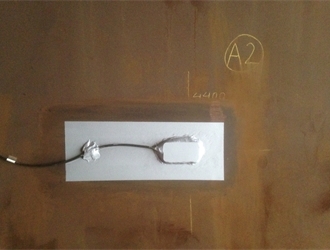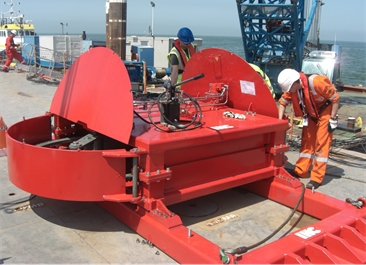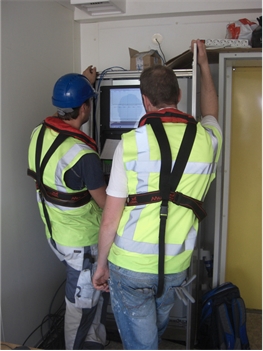HBM Strain Gauges Measure the Loads on Offshore Wind Turbine Foundations
HBM strain gauges and data acquisition equipment were used in a unique experiment performed in the Westermeerwind wind farm in the Netherlands to investigate the damping effect of the sea bed on the loads on wind turbines.
In order to make wind energy more attractive than fossil power and also as a result of the effects of competition, providers are searching for new ways of supplying the required megawatts in as economical a way as possible when constructing offshore wind farms. Many technical innovations in the areas of masts, turbines, and rotors have therefore been introduced in recent years to achieve this. Siemens Windpower has started a project to gain more insight into the interaction between the sea bed and the wind turbine foundations.
HBM strain gauges and data acquisition equipment were used in a unique experiment performed in the Westermeerwind wind farm in the Netherlands to investigate the damping effect of the sea bed on the loads on wind turbines. The goal was to obtain reliable input parameters for a standardized design process for wind turbine foundations.
Siemens Windpower is a new company that has been an independent part of Siemens AG since 1 January, 2017, combining a number of existing Siemens divisions and acquisitions that deal with wind energy. Siemens Windpower B.V. in the Netherlands has grown, in the meantime, into an organization with around 120 staff. It maintains existing wind farms and also takes care of the engineering and project management for constructing new wind farms.
Thanks to its collaboration with the TU Delft, Siemens Windpower in the Netherlands has gradually evolved into a Centre of Competence for the development and construction of wind turbines. The emphasis is on calculating loads and designing the masts and foundations. Research into developing and manufacturing the turbines is carried out mainly by the company’s Danish branches.
